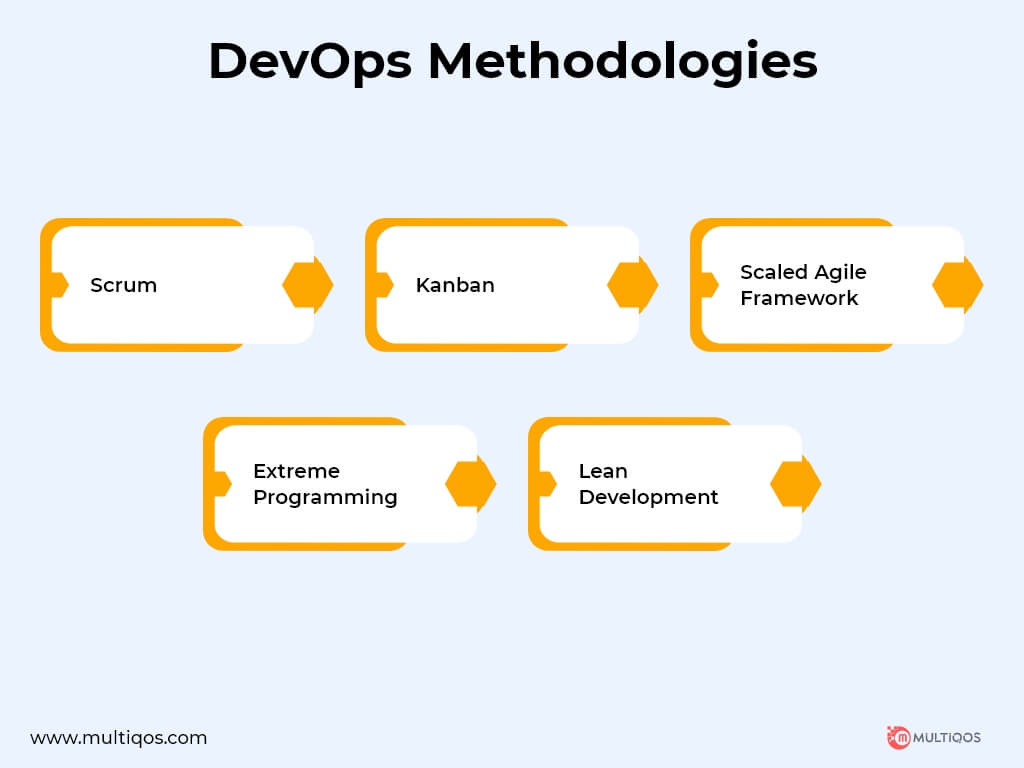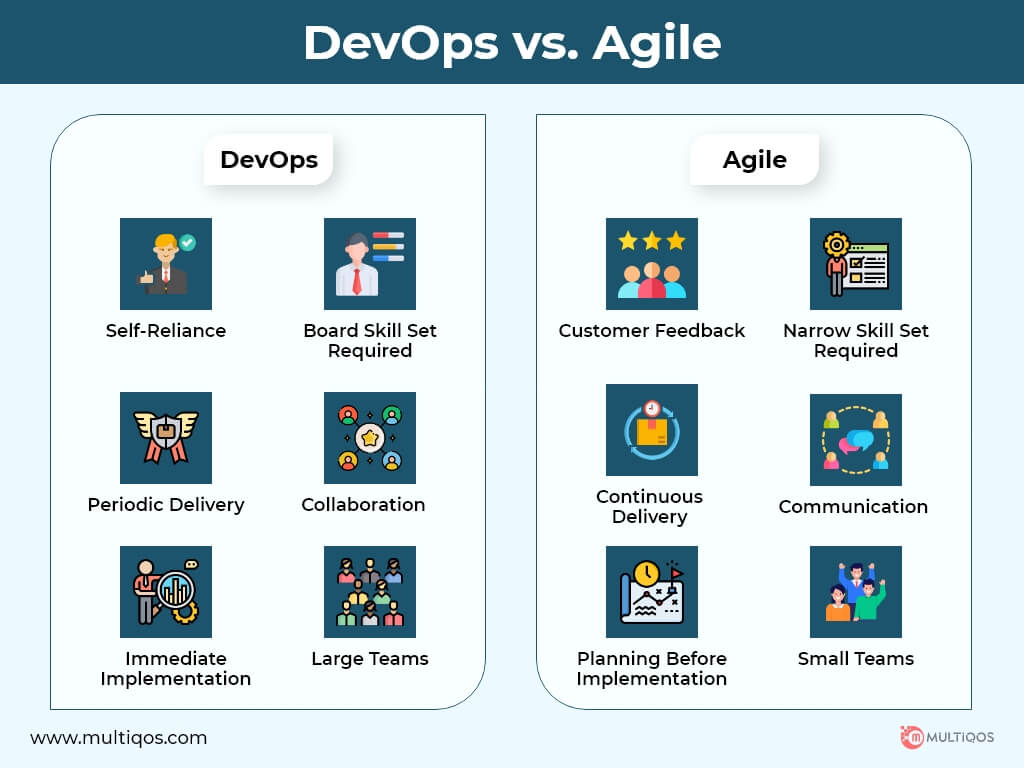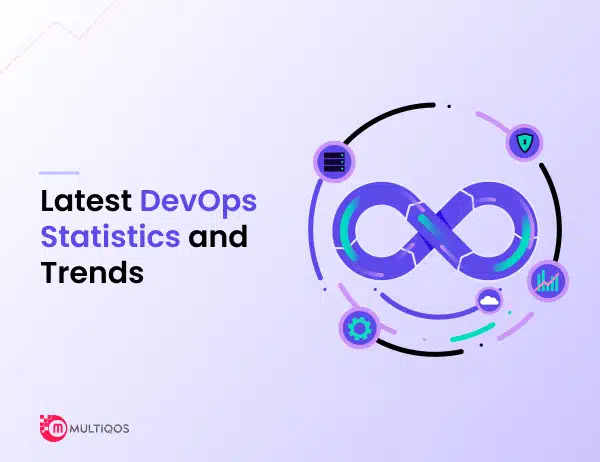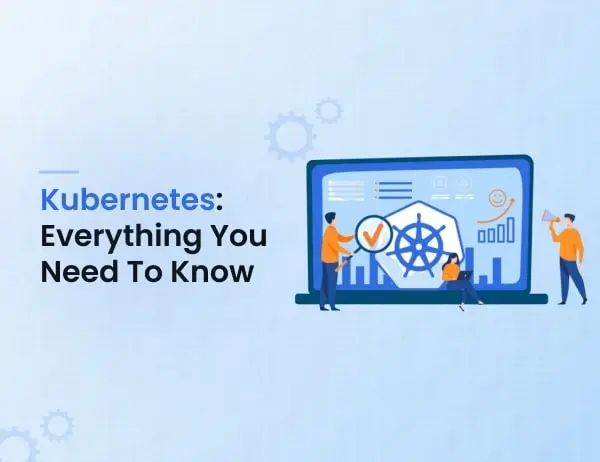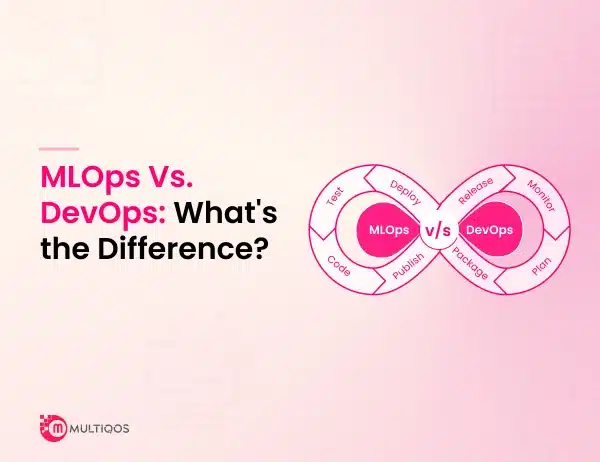
Introduction
One of the extremely fast markets is the IT business, specifically the Software Development industry, since it has been responding to market demands on a regular basis. In the IT sector, the adaptations in the web development process are known as DevOps and Agile. The Relationship between Agile and DevOps well known in the development world. For a long period of time, DevOps has been gaining acceptance in the software development industry. DevOps and Agile are two software development strategies for mobile app development that assist developers in swiftly and efficiently delivering a finished product. Many organizations intend to use these techniques. However, the real question remains as to what each methodology entails.
What’s DevOps?
DevOps is a software development process that stresses integration, communication, and IT Professional teamwork in order to expedite the delivery of new products. When development and operations teams work together in a DevOps environment, code can be sent to production more quickly and reliably than ever before.Set of development and IT operations are referred to as a set DevOps ideas foster communication, information sharing, and end-to-end responsibility. They specify what DevOps is and what it’s for.
DevOps is a methodology for software development that integrates processes, technology, and people in order to build linear functionalities. Strategy and monitoring, development, building and testing, delivery, management, and operations are all part of the strategy. DevOps is distinctive in that it brings together developers, IT operations, quality management, and security teams to streamline all aspects of launching a new product, release, or upgrade.
The following are some examples of DevOps methodologies:
-
Scrum
Scrum is a software development approach used to address problems about implementing good goods through a network.
-
Kanban
Kanban is a software development method that employees use to avoid overburdening and ensure a smooth delivery.
-
Scaled Agile Framework
A scaled Agile framework is a collection of protocols that help with scaling concerns.
-
Extreme Programming
Extreme Programming (XP) is a type of software development methodology that aims to improve software quality and contact with customers. With the passing of time and the problem gets deciphered, XP incorporates aspects such as programming in pairs, coding standards, and test automation.
-
Lean Development
Lean is a set of manufacturing standards and procedures that helps organizations become more agile by reducing the time it takes to develop software. It integrates manufacturing ideas and techniques to improve the software development experience and assist agile businesses.
What is Agile?
Agile development is a lean manufacturing-related delivery method. Its core principles revolve around developing a working model or building while dealing with the challenges of changing conditions and expectations. The ability to adapt is a core quality of agile, straddling the line between the development team and the end customer by prioritizing the demands of users and stakeholders over strict plans.
Agile techniques break the thing down into smaller components. It then brings them together for final testing, which may be accomplished using a variety of approaches, including Scrum, Kanban, Scrum, and XP. The agile methodology requires continuous testing and development throughout the SDLC process. This software development technique is centred on iterative, incremental, and evolutionary development.
The following are some examples of Agile methodologies:
-
Scrum
Scrum in Agile is a timeframe that divides tasks into iterations that last a few weeks.
-
Extreme Programming
Extreme Programming emphasizes teamwork and the development of human ties, allowing developers to monitor input and improve developer competence routinely.
-
Dynamic Software Development Method
This methodology enables developers to create a foundation for future software delivery depending on system input.
-
Adaptive Software Development
ASD emphasizes constant change, communication between developers and clients, and adjusting to changes in the market.
-
Future Driven Development
By structuring the team and coding the necessary code, Future Driven Development concentrates on faster deliveries and shorter iteration.
-
Kanban
The Kanban approach was created in reaction to Scrum’s call for continuous software delivery rather than breaks. It specializes in the just-in-time (JIT) process, which discovers and corrects flaws as soon as possible.
-
Behavior Driven Development
Behavior Driven Development (BDD) was established to ensure that non-technical aspects such as developing test scenarios and features are stated, and objectives are conveyed correctly.
DevOps Vs. Agile – Key Differences
Some of the major DevOps vs. agile differences are:
- Agile generally follows an iterative method that emphasizes collaboration, customer feedback, and small, fast releases, while DevOps integrates development and operational processes.
- According to DevOps and agile principles, after every iteration, Agile advocates for gradual deployments, whereas DevOps strives to implement continuous delivery on a daily basis.
- Agile promotes cross-functional team cooperation and iterative releases on a continual basis. For DevOps to succeed, it has to bring together the Development and Operations teams in a continuous development cycle.
- Agile emphasizes welcoming changes in the middle of a project. DevOps is a software engineering approach that encompasses continuous development and testing from start to finish.
- Agile teams are made up of people with similar specific skills, while the team members in DevOps have a wide range of abilities.
- The goal of the DevOps strategy is to enhance speed and performance by focusing on the corporate atmosphere between management and deployment. At the same time, Agile software development is a framework for developing a highly customer-centric solution in cooperation with customers and service team members.
- Employee feedback is factored in the DevOps organization. Customer input is extremely important in the Agile methodology.
- There is a much larger staff working under the DevOps surface. Functioning in small development teams is recommended by the Agile methodology.
- Continuous monitoring systems are necessary for DevOps. On the other hand, Agile accepts change at every level to produce a robust product at the end.
DevOps Vs. Agile – Competitive Difference Between Agile and DevOps
We’ll compare DevOps vs. agile in this section.
-
Fragmentation vs. Cross-functionality
Each individual of the team of the Agile development process is made to work or specialize at all types of work to ensure that the process is not affected by the absence of one or more members. It does, however, occur when separate groups enter operations and are therefore not part of the same team. It expedites the process while also improving team communication.
-
Communication
There is an obvious distinction between Agile and DevOps when it comes to communication techniques. Daily meetings, which are casual and straightforward, are a part of agile methodologies.Operating by the documentation or any metrics is not part of Agile communication. On the other hand, DevOps is focused on certain themes during communication and is not done daily.
-
Time Schedule
Agile teams perform for pre-determined short periods, ranging from a few weeks to several months, and these are called sprints. Following the agile methodology, developers are only concerned with software development as soon as possible. DevOps Solutions is more concerned with balancing the system as a whole and maintaining its dependability.
-
Automation
The distinction between these two strategies is based on automation. Agile somehow doesn’t rely on process automation as much as DevOps does rely on automation. Nevertheless, automation is at the heart of the DevOps methodology, as it strives to streamline the process and increase efficiency to get the desired result.
-
Documentation
In matters of documentation, there is a difference between both DevOps and Agile since the agile method is largely about casual communication; it does not require meeting supervision or minutes. To thoroughly comprehend software updates, the DevOps technique keeps track of discussions and requires good documenting.
-
Specialization
Each team member has an equal chance in Agile specialization. Unlike DevOps, Agile assumes that all members of Scrum can perform any operation. This would aid in preventing any issues or bottlenecks that would prevent the entire process from running smoothly. Whilst in DevOps would create separate production and operations teams. Despite the fact that there is indeed a clear divide between the two, communication between the two teams exists.
-
Team Composition
Agile and DevOps teams are of different sizes. Agile is all about having a small team because having fewer people on board means more efficiency. This is not the same as DevOps, which entails several teams with many members working on large projects. All teams collaborate and must maintain open lines of communication.
-
Tools
When it comes to implementing their concepts, DevOps and Agile prefer to employ distinct tools. Jenkins, Azure, and CircleCI, DevOps Pipelines are some of the most popular DevOps technologies. On the other hand, Agile uses well-known software like MindMeister, Aha!, and Trello.
-
Team Skill Set
Agile development stresses the development of a range of equivalent and equal talents in all team members. DevOps splits and spreads the development and operations teams’ skill sets.
-
Software Development vs. Software Deployment
Agile emphasizes software development, but DevOps focuses on the proper deployment of that product. DevOps can deploy software produced using a variety of methodologies, including Agile and non-Agile theories, such as the Waterfall methodology, which is still appropriate for some projects.
-
Speed
Agile is all about regular and rapid delivery, but DevOps rarely has this as a goal or a component of the aim.
When to Choose DevOps for Development?
In Web Development, DevOps is a software development process that focuses on IT team communication, cooperation, and iterative development to allow continuous and quick product deployment. If your company fails to meet this goal or attempts to do so, you can rely on DevOps.
Interaction between the Development and Operations teams is at the foundation of DevOps. That being said, the code deployment and manufacturing would be more efficient and automated. In case your development and operations team are at odds and you want to strengthen their collaboration, then you’ll require DevOps.
When a company grows large enough to gain significant credibility from its consumers, it naturally shifts to DevOps, but not everyone does. After beginning in more traditional ways, many tech behemoths have adopted the DevOps paradigm. To deal with the ongoing strain of launching items while avoiding losing customers is the major reason why they shift to DevOps culture. There is, however, no hard and fast rule in this case. Any organization can implement this model.
When to Choose Agile for Development?
The agile development approach is built on the repeated operation of development processes and testing in the software development process. In addition, the agile methodology divides the product into multiple little portions for testing. It is important to mention that if you want to avoid making permanent changes, you can adopt the Agile development process. Moreover, agile principles and techniques can be important if you focus on building customer trust, work with small and medium-sized businesses, and plan to understand the business shifting needs. At each and every level, the agile framework emphasizes faster delivery and keeping in touch with the needs of the consumers.
How Can Organization Implement an Agile Method to DevOps?
The most significant agile development vs. DevOps distinction is that they are not mutually exclusive. This is because DevOps service is a culture that encourages collaboration between all parties involved in software maintenance and development. Their Agile development is a process for maintaining productivity and accelerating releases while dealing with the common reality of changing requirements. Although DevOps and agile are distinct approaches, they result in higher efficiency and more consistent results when combined. It can be said that both Agile and DevOps can coexist smoothly; however, you must have a deeper understanding of the speed-quality link. You will lose at every phase of software development if you do not do so. Work with an extremely effective partner delivering DevOps Consulting Services and evaluate the fundamental difference agile and DevOps have to showcase.
MultiQos is the leading Web & Mobile App Development company excelling at the web and mobile app development Process that can help you achieve your developmental aims and objectives by partnering with an expert software development business. Getting a helping hand with the cultural job, on the other hand, can assist you in enhancing your technological ability.
Conclusion
DevOps and Agile are two common software development strategies for moving a product from strategy to development to deployment. Companies and businesses use various approaches to manage and optimize the software development life cycle depending on the business goals, project aims, and objectives. DevOps focuses on tasks and improves on them based on feedback from the internal team or the employees. Agile works the best whenever a single project is given to a specialized design team. You can weigh down the pros and cons according to your project requirements and then decide the best option for your company.
Looking for DevOps Consulting Services?
Our team of DevOps solutions architects is available to assist you without any cost or obligations.
FAQ on Agile Vs. DevOps
There isn’t a better approach for deciding which is the best option since it all relies on your organization’s issue areas and what it intends to accomplish.
Both techniques can improve software performance and effectiveness of delivery. On the other hand, the Agile paradigm has supplanted the old-school waterfall methodology. DevOps, on the other hand, is yet to be replaced. Nevertheless, agile is why DevOps exists. As a result, your company has the option of using both approaches.
No, it’s not part of the Agile approach, but neither are they mutually incompatible. DevOps is more of an Agile extension. The requirement for a shift in methodology develops when attempting to tackle a problem. While Agile addresses the divide between developers and customers, the DevOps model improves internal communication. So, even though they aren’t related, they work together to solve a critical problem.
There are numerous advantages of using agile, including adjusting to market changes, increased quality checks, improved team cooperation, anticipated product insights, etc.
Both Agile and DevOps have been used in software development. However, even though they both strive to improve the process of software development, they go about it in quite different ways. They aren’t, however, mutually exclusive.
Get In Touch

